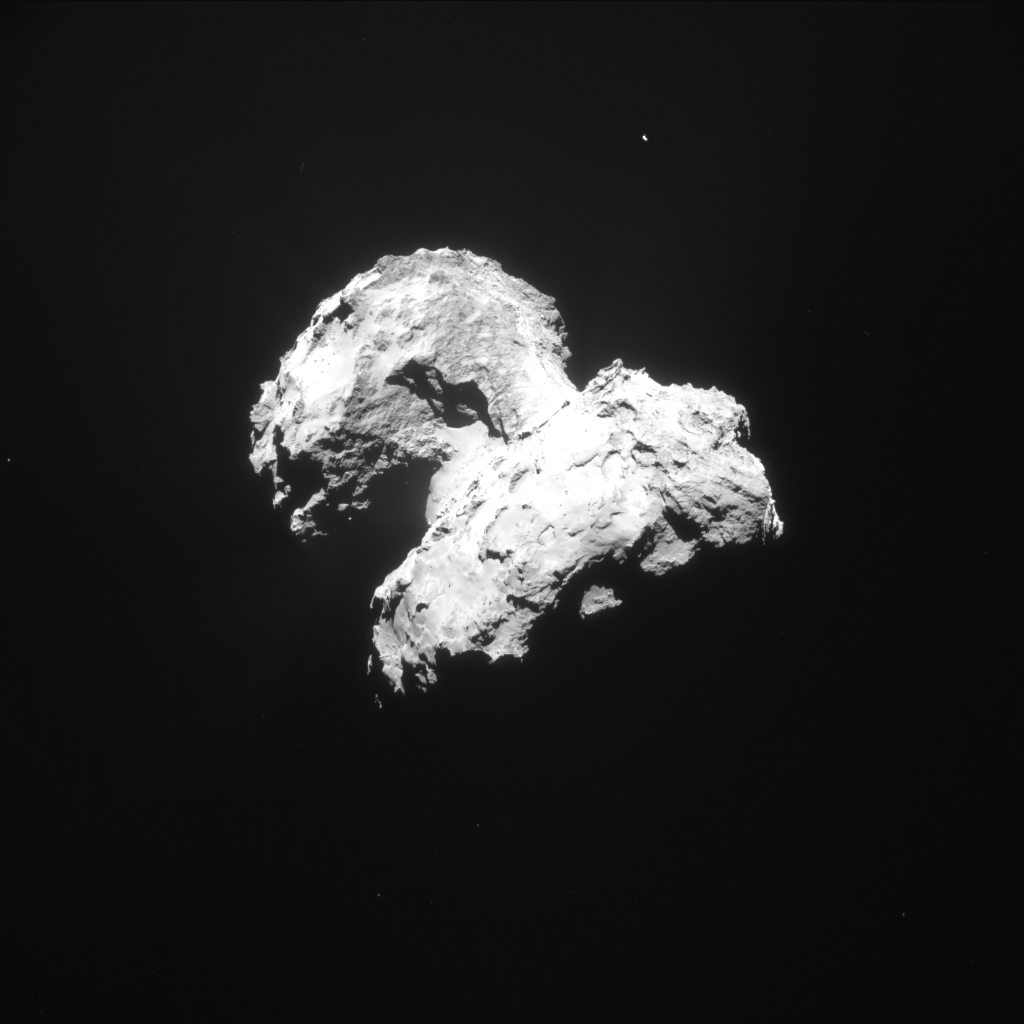OMG Philae finds life (well, not quite…)
Somewhere at an imprecise location on a distant comet sits a humble spacecraft. After a bouncy landing at the ‘Agilkia’ site of the 67P/Churyumov – Gerasimenko comet, little Philae withstood a fair few bumps before grinding to a halt at what scientists now call ‘Abydos’. The new, dark location ensured that Philae’s solar battery reserves only lasted for some sixty hours before it went into hibernation.
But three days was enough for the lander to fish out some data about the chemical composition of the comet, sending it to the Ptolemy and COSAC instruments, the latter of which is specially designed to analyse complex organic molecules via mass spectrometry.
By “organic”, we mean molecules containing carbon: one of the major elements that make up not only our bodies, but also life around us. The fact that four unprecedented organic compounds (for the chemists amongst you: methyl isocyanate, acetone, propionaldehyde and acetamide) have been detected amongst the total sixteen compounds found has caused quite a stir in the public eye, following a successful peer-review and the subsequent release of these data on the 30th July in the academic journal ‘Science’.
Be wary of dramatic headlines such as “OMG Philae Finds Life!” floating around the Internet; allow your scepticism to creep in upon hearing such claims. Philae has no physical way of directly testing for life, the idea having been scrapped by its planning committee 15 years ago.
What you should allow yourself to get super excited about is the fact that the various ice structures enveloping 67P’s variable surface may imply that there are “micro-organisms being involved in the formation of the icy structures, the preponderance of aromatic hydrocarbons, and the very dark surface”, claims Prof. Chandra Wickramasinghe, member of Philae’s planning party.
The organisms are believed to become active at temperatures above -40⁰C, well above the range of -143⁰C to -183⁰C as the comet was measured to be in November 2014. However, as the comet’s trajectory leads it towards perihelion, surface temperatures will rise. Scientists live in the hope that Philae eats enough sunlight to be able to receive communications from its recently somewhat estranged mother Rosetta, in order to study the ways the comet changes as it approaches the point of its orbit closest to the Sun.
Another optimistic claim about the aforementioned organisms comes from the principal COSAC investigator, Fred Goesmann: “If such cometary material falls onto a planet in the right environment, emerging life could make use of it”. These findings may strengthen the belief that the origins of life on Earth may be deeply rooted in events of comet collisions with our home planet. Because a comet is like “a time capsule of knowledge” according to Goesmann, learning more about the surprisingly porous structure of C-G may help scientists understand cometary evolution, as well as shed light on the history of our Solar System.
Photographs taken during initial descent show physical signs of erosion on the comet, likened to those sighted on Mars. Presently, analysis has shown that whereas the initial landing site, Agilkia, consists of soft, granular dust, Abydos has a contrastingly harder surface, as determined by the failure to dig Philae’s drill into it. This therefore means that current instruments onboard are insufficient to dig out a rock sample to analyse those organic microbes; thus, we must rely on the powers of mass spectroscopy to determine chemical composition.
There is huge potential for future sampling and data analysis if Philae awakens from its current state of hibernation, following a brief period of awakened activity in June 2015. This second round of data gathering will result in more excitement about both the physical structure and chemical composition of the comet. With sufficient results, we will be able to further understand cometary evolution and come closer to determining whether or not life on Earth emerged from a cometary neighbour.

Comments